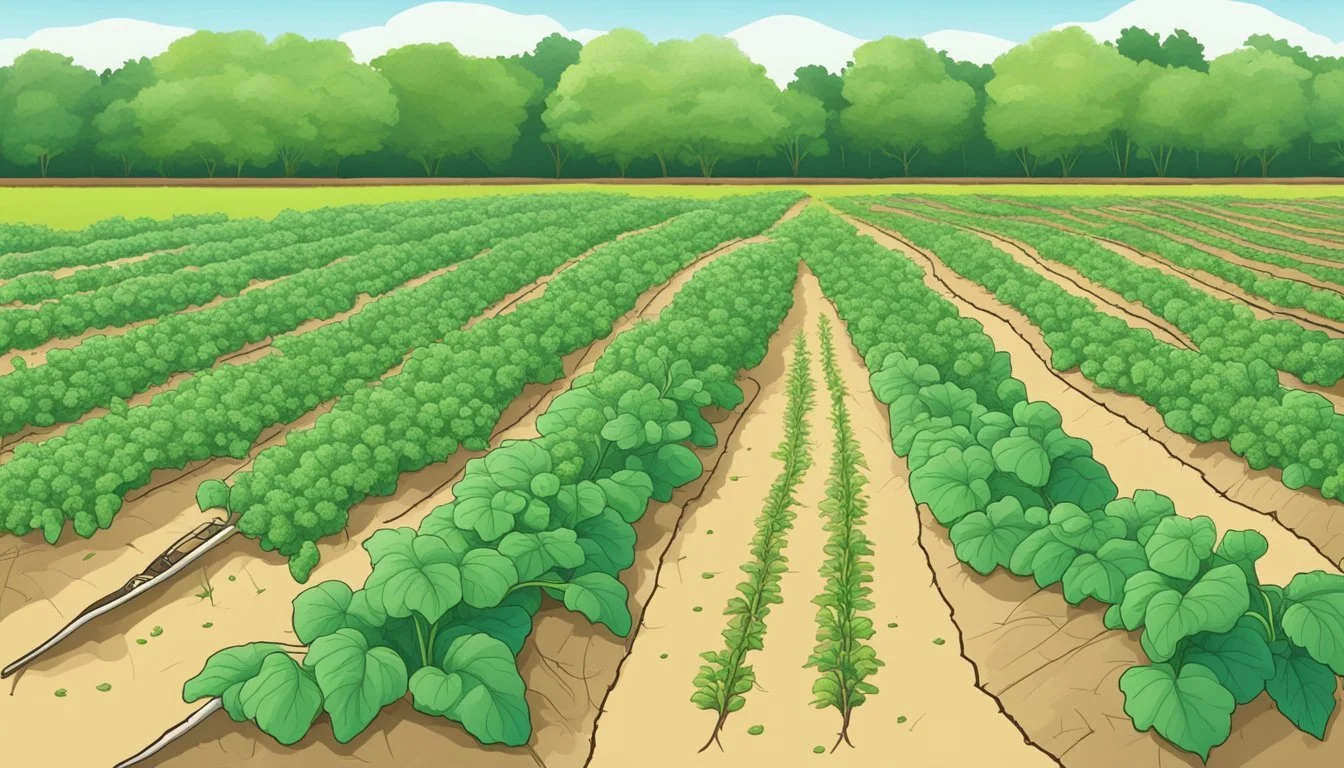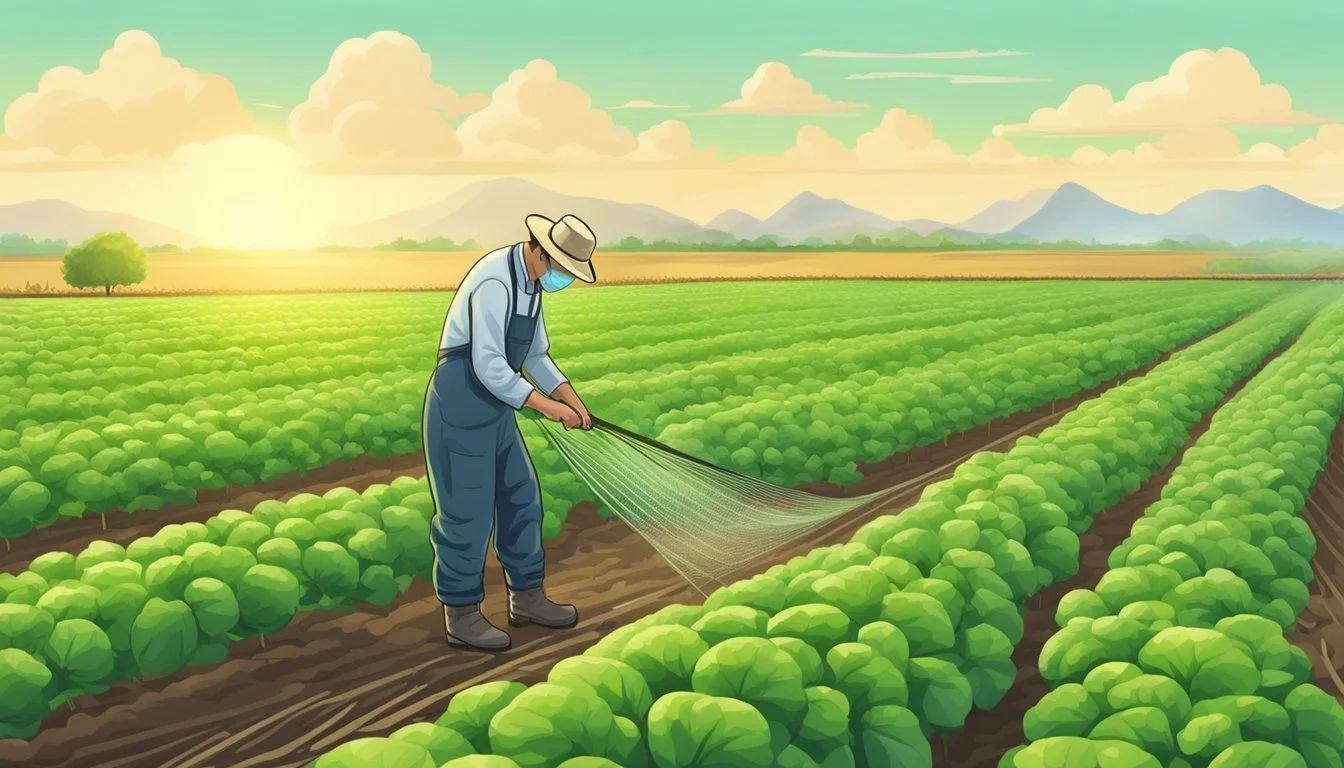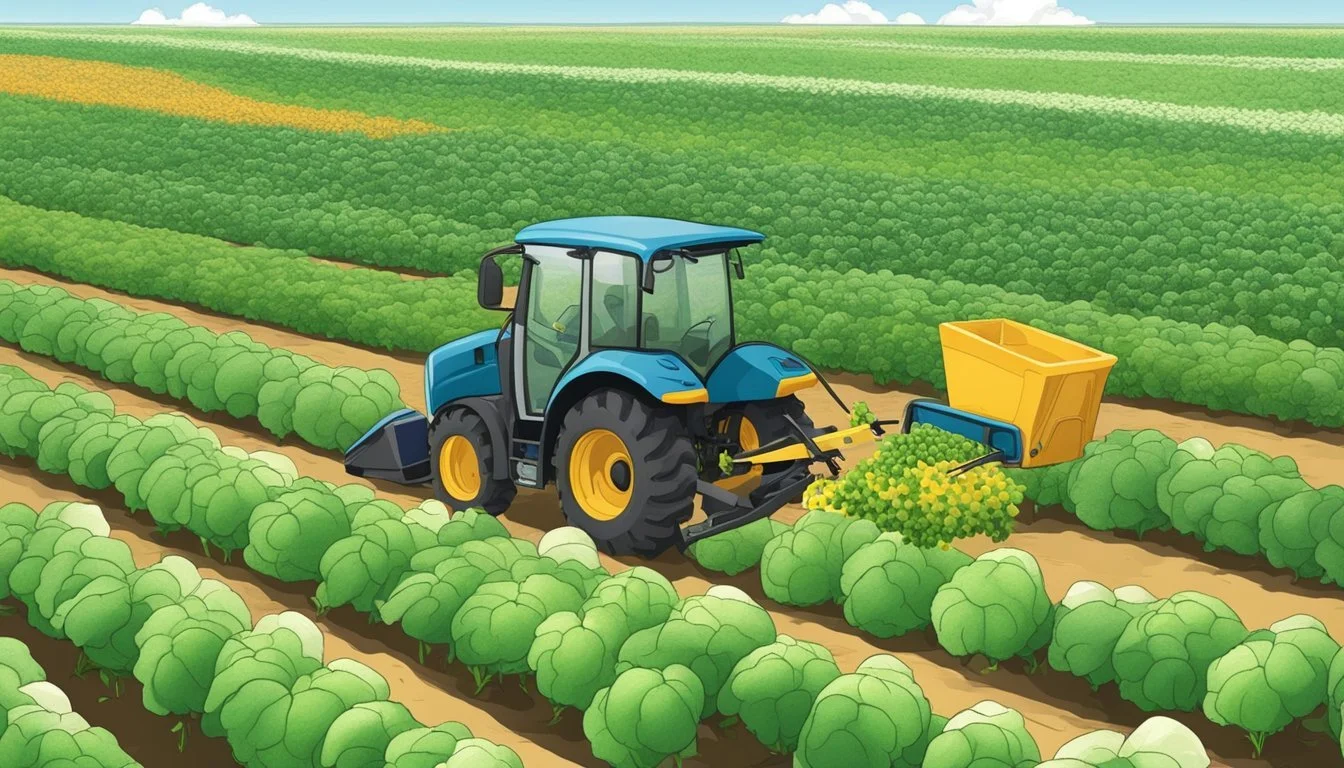Pest Control for Daikon
Effective Strategies to Protect Your Crop
Daikon radish, a popular root vegetable in Asian cuisine, offers a crisp texture and a mild flavor that enriches various dishes. However, as with any crop, daikon radishes are susceptible to a range of pests that can affect their growth and yield. Effective pest control is crucial for gardeners aiming to cultivate healthy and bountiful daikon radishes. Managing these pests without compromising the vegetable's quality or the environment necessitates a strategic approach.
Organic pest control methods are often employed to target common pests like aphids and flea beetles, which can wreak havoc on daikon radish crops. By incorporating preventive measures such as crop rotation and maintaining good garden hygiene, gardeners create a resilient growing environment. Early identification and intervention are vital in minimizing the damage caused by these pests. Understanding the life cycle of the daikon radish and the habits of its common pests provides a foundation for implementing timely and effective pest management techniques.
Optimising daikon growth conditions, which may include full sun to partial shade placement and sufficient soil moisture, plays a critical role in natural pest deterrent. Building on this, the knowledge of how to control radish pests and diseases effectively ensures gardens remain productive and sustainable. With the right care and attention, gardeners can expect a flourishing daikon harvest.
Understanding Daikon Radishes
Daikon radishes are a versatile and important vegetable in both culinary and agricultural contexts. They are known for their distinctive taste and considerable benefits in soil health management.
Varieties of Daikon Radish
Daikon radishes, often termed winter radishes, are a crucial root vegetable in Asian cuisines, grown primarily for their large, crisp, and mildly sweet white roots. There are numerous cultivars of daikon, each adapted to different climates and soil conditions:
'Miyashige': White and long, suitable for fall planting.
'Sakurajima': Large and often used in Japanese recipes.
‘Minowase’: A popular variety that produces elongated roots ideal for a variety of recipes, including salads.
Nutritional and Culinary Benefits
Daikon radishes are not only valued for their flavor but also for their health benefits. These vegetables are:
Low in calories: Making them a smart choice for weight management.
Rich in Vitamin C: Essential for immune function.
Fibrous: Which aids in digestion.
In the kitchen, daikons are flexible ingredients used fresh in salads, pickled, or cooked into soups and stews.
Daikon in Agricultural Systems
The agricultural importance of daikon radishes extends beyond their role as a vegetable crop. They serve as:
Cover crops: Known as tillage radishes, they improve nutrient cycling and soil structure.
Preventers of Soil Erosion and Compaction: The deep roots of daikon break up compacted layers, enhancing soil fertility and helping to prevent soil erosion.
Enhancers of Biodiversity: Their use in crop rotation promotes a more diverse and resilient ecosystem.
In organic farming, daikons are appreciated for these characteristics, contributing to sustainable agriculture.
Soil and Climatic Requirements
Successful cultivation of daikon radishes requires attention to both soil and climatic conditions to ensure robust health and optimal growth.
Soil Preparation and Health
Daikon radishes thrive in fertile soil enriched with organic matter. The soil should have a pH between 5.8 and 6.8, leaning towards neutrality. Before planting, soil should be well-aerated and loose to facilitate proper root development and water infiltration. Essential nutrients such as nitrogen, phosphorus, and potassium must be balanced, as they play critical roles in plant health and root formation. Incorporate a mix of these by either amending the soil with composted organic matter or utilizing a balanced, all-purpose fertilizer.
Optimal Climatic Conditions for Growth
Daikon radishes prefer full sun to partial shade environments, with temperatures ranging from cool to moderate — they are a cool-season crop well-suited for spring or fall. While they are relatively hardy and can tolerate light frost, extremely cold temperatures, especially approaching winter, can impede growth or damage the plants. Ample and consistent moisture is crucial, yet good drainage is equally important to prevent root rot. Daikon radishes typically require 1 to 1.5 inches of water per week, either from rainfall or irrigation, to maintain the necessary soil moisture levels for uninterrupted growth.
Cultivation Practices for Daikon
Effective cultivation practices for Daikon radishes encompass precise seeding, attentive growth management, and proper harvest and storage methods. These practices are essential to maximize yield and ensure quality produce.
Seeding and Germination
Daikon, like many root vegetables, begins with the crucial steps of seeding and germination. Sow Daikon seeds directly into the soil to prevent the disruption of the long taproot. It's recommended to plant seeds at a depth of ¼ to ½ inch deep in well-tilled soil.
Seedling Spacing: Thin seedlings to a distance of 4-6 inches apart to allow for proper growth.
Germination: Seeds will typically germinate within a few days under the right growing conditions, requiring consistent moisture.
For optimal results, choose a full sun to partial shade location.
Growth and Fertility Needs
During its growth phase, Daikon requires:
Irrigation: Adequate and regular watering is paramount to prevent stress on the plant and maintain steady growth.
Fertilization: Apply a balanced fertilizer to provide nutrients required for root development. Over-fertilization can lead to excessive foliage at the expense of the root.
Companion plants such as peas can enhance growth by fixing nitrogen in the soil. Maintain a crop rotation with non-related vegetables to thwart soil-borne pests and diseases.
Harvest and Storage Techniques
To ensure the best yield and quality:
Harvesting:
Monitor Daikon for signs of maturity, typically achieved in 40-70 days, depending on the variety.
Opt for a gentle harvest to avoid damaging the long or round radish roots.
Storage:
Clean the radishes and store at cool temperatures with high humidity to prolong freshness.
Crop should be kept away from ethylene-producing fruits like watermelons to avoid premature decay.
Responsible harvest and storage techniques extend the shelf-life of Daikon radishes, safeguarding their crisp texture and flavor.
Pest and Disease Management
In addressing the health of daikon radishes, it's crucial to consider both the prevention and control of pests and diseases. Effective management can significantly reduce damage and promote a robust crop.
Common Pests and Diseases
Daikon radishes can be susceptible to a variety of pests such as aphids, flea beetles, and whiteflies. These insects can cause significant damage to the foliage and roots of the plants. Bemisia tabaci, a species of whitefly, has been known to infest daikon radish plants, potentially leading to disease spread. In terms of diseases, radishes are prone to clubroot disease, a fungal affliction that limits water and nutrient uptake, and root rot, commonly caused by excessive moisture and poor soil conditions.
Pests:
Aphids
Flea Beetles
Whiteflies (Bemisia tabaci)
Other insect pests (flies, beetles)
Diseases:
Clubroot Disease
Root Rot
Organic and Integrated Strategies
Organic matter, such as compost, can improve soil health and suppress disease by fostering beneficial microorganisms. Employing integrated pest management (IPM) techniques merges biological, cultural, mechanical, and chemical strategies to reduce pest populations with minimal environmental impact. IPM promotes the use of beneficial insects, such as hoverflies, which prey on aphids, and planting companion plants like marigolds and chives (how long do chives last?), known to repel various pests. Additionally, organic controls such as neem oil can be effective against pests like flea beetles and aphids.
Implementing cover crops can assist in managing weeds and improving soil structure, also serving as a habitat for pest predators. Utilizing floating row covers can protect seedlings from fly and beetle invasions. Regularly rotating crops and selecting disease-resistant varieties can also reduce the risk of soilborne diseases.
Supporting Ecosystems Through Cover Cropping
Cover cropping, specifically through planting daikon radishes, offers a sustainable approach to enhancing the garden ecosystem. This section explicates the multifaceted role of cover crops in pest control and soil health.
The Role of Cover Crops in Pest Control
Cover crops, such as daikon radishes, are planted not only to improve soil structure but also to manage pests in organic farming systems. They act as a living mulch, creating a habitat that is less inviting to pests and reducing the likelihood of infestations. When used as a winter cover crop, daikon radishes work effectively by disrupting the life cycle of pests, preventing them from gaining a stronghold in the garden.
Companion Planting for Pest Deterrence
Companion planting is a cornerstone in the garden arsenal for pest deterrence. By strategically planting daikon alongside specific companion plants like marigolds and chives, gardeners can repel harmful insects. For instance, marigolds emit a scent that is known to deter nematodes, while chives can ward off aphids, both being common garden pests.
Promoting Beneficial Insects and Biodiversity
Biodiversity is essential in a balanced garden ecosystem. Cover crops play a vital role in promoting the presence of beneficial insects such as hoverflies, which are predators of common pests. Daikon radishes contribute to this diversity by providing flowers for these insects and helping to maintain a stable environment that supports a range of species.
Soil Health and Preservation with Cover Crops
The health of soil is a foundation of a successful garden. Cover cropping improves soil organic matter and fertility, while also promoting soil aeration, which is crucial in combating compaction. Daikon radishes especially are famed for their deep taproots which break up compacted layers, allowing for better water and moisture retention and offering full sun exposure to subsequent crops. As a result, they enrich the soil structure and make conditions more favorable for future plantings, whether it's another round of cover crops or a bed of greens for your next salad.
Post-Harvest Practices and Utilization
Efficient post-harvest practices are vital to maintain the quality and extend the shelf life of daikon, a versatile crop that plays a significant role in culinary, agricultural, and soil management applications.
Storing and Extending Daikon Shelf Life
To preserve the freshness of daikon, optimal storage conditions involve cool temperatures and high humidity. The crops reach maximum shelf life when harvested at peak maturity and stored immediately. Maintaining the right irrigation levels before harvest contributes to the yield and ultimate storability of the white roots.
Daikon in Culinary Applications
Daikon radishes are a staple in Asian cuisines, featuring in a variety of recipes. They can be eaten raw in salads, pickled, or incorporated into hot dishes. Their versatility in the kitchen is derived from their crisp texture and mild flavor which adapts well to different preparation methods.
Daikon as a Forage Crop
As a forage radish, daikon is used to feed livestock, providing valuable nutrients. Its fleshy roots and fast plant growth allow for high yield, making it an excellent choice to support forage systems.
Daikon in Crop Rotations
Incorporating daikon into crop rotations can disrupt pest cycles and promote nutrient cycling. Known as a tillage radish, their deep roots can help reduce the need for mechanical soil preparation, paving the way for subsequent crops.
Utilizing Daikon in Cover Crop Systems
Daikon makes an effective cover crop and living mulch, particularly as a winter cover crop because of its ability to improve soil structure. This contributes significantly to overall soil health by enhancing soil organic matter and fertility.
The Impact of Daikon on Soil Improvement
The impact of daikon on soil improvement is noteworthy. It acts as a natural aerator, creating channels in the soil which boosts soil aeration and water infiltration. This also aids in fertilization effectiveness and cover cropping strategies aimed at soil conservation.
Environmental Impacts and Sustainability
Sustainable pest control in agriculture through the use of daikon radishes is a strategy that addresses several environmental concerns, from soil health to water conservation. This section explores how incorporating daikon radishes into agricultural practices contributes to environmental sustainability.
Daikon Radishes and Soil Erosion Control
Daikon radishes, often used as cover crops, play a crucial role in soil erosion control. Their deep roots break up compacted layers of earth, reducing run-off and preventing soil erosion. This practice, known as tillage radish planting, improves soil structure and promotes the growth of beneficial insects and microorganisms.
Benefits:
Enhances soil fertility
Provides habitats for beneficial insects
Improving Water Management with Daikon Cropping
Cropping daikon as companion plants can significantly enhance water infiltration in soil due to their deep root systems. This improvement leads to better moisture retention, reducing the need for frequent irrigation. As a result, water management becomes more efficient in agricultural settings.
Key Points:
Increases water infiltration
Reduces dependency on irrigation systems
Daikon's Role in Sustainable Agriculture
Implementing daikon in crop rotation systems bolsters biodiversity and contributes to more sustainable agricultural practices. The plant fosters an environment supportive of organic farming, minimizes dependence on chemical pesticides, and encourages a holistic approach towards sustainable agriculture.
Highlights:
Supports biodiversity in farming systems
Promotes organic and sustainable agricultural methods
Frequently Asked Questions
In this section, readers will find detailed responses to common inquiries about managing and identifying pests that can affect daikon radish crops, along with the best practices for applying these methods.
What are common pests that affect daikon radishes during growth?
Common pests impacting daikon radishes during their growth include aphids, flea beetles, and root maggots. These pests can cause significant damage to the crop if not managed properly.
Which pest-control methods are recommended for protecting daikon radish crops?
Protecting daikon radish crops involves an Integrated Pest Management (IPM) approach. This includes regular monitoring, using physical barriers, and applying appropriate pesticides only when necessary.
How can I identify pest infestation in my daikon radish plants?
An infestation in daikon radish plants can be identified by checking for signs like holes in the leaves, wilted or discolored foliage, and the presence of pests on the plants.
What are some organic solutions for managing pests in daikon radish cultivation?
Organic solutions for managing pests include using natural predators like ladybugs, applying neem oil, and employing crop rotation to prevent the buildup of pests in the soil.
When is the best time to apply pest control measures for growing daikon radishes?
The best time to apply pest control measures for daikon radishes is early in the planting process to prevent pests from establishing themselves. Monitoring should occur throughout the growing season to address any issues promptly.
Are there any preventive practices to reduce the risk of pest infestations in daikon radishes?
Preventive practices to reduce pest infestations in daikon radishes include maintaining a clean garden space, removing plant debris, and using floating row covers to protect the plants from pests.







